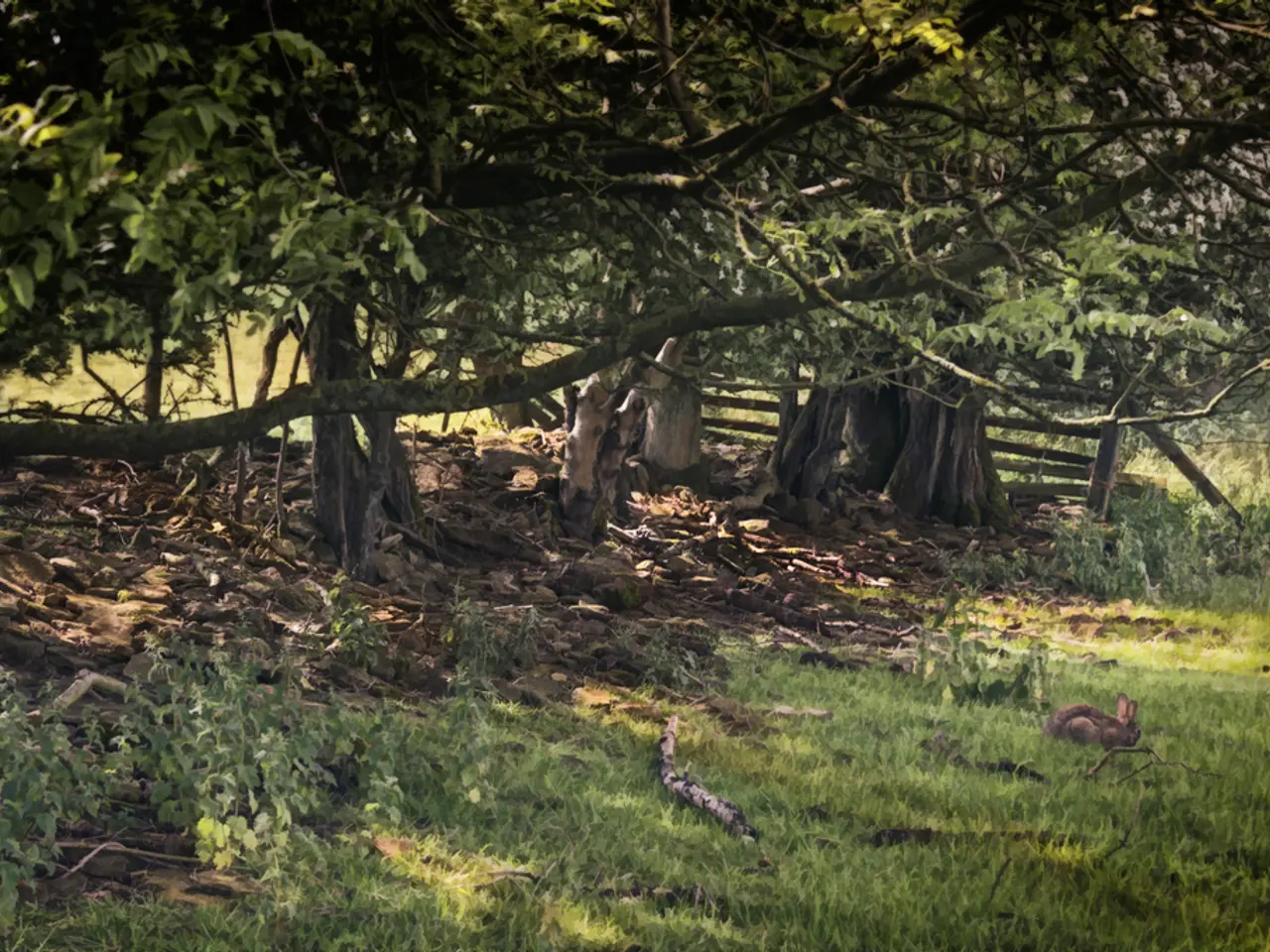Protecting your Plants with Burlap: Understanding the Advantages of Burlap in Garden Work
Burlap, a natural fabric made from jute fibers, is a versatile and eco-friendly material that gardeners can use to protect their plants during the cold winter months. This breathable windbreak acts as a shelter for plants and soil, allowing airflow while reducing winter damage without causing moisture buildup or overheating.
Newly planted trees, temperature-sensitive trees, tropical plants, arborvitaes, and even smaller plants like begonias and freesias can benefit from burlap protection. By wrapping these plants with burlap, gardeners can help stave off harsh winds, too much sun, frost, and winter burn. Additionally, burlap covers can deter hungry critters from nibbling on the plants.
To wrap a plant with burlap, gardeners should cut the material into pieces large enough to cover the entire plant. Carefully drape the burlap over the plant, ensuring that it covers all parts, including the leaves, stems, and branches. Secure the burlap with twine or stakes, but avoid sealing it airtight to maintain breathability and prevent damage from trapped moisture.
When it comes to using burlap for winter protection, a loose wrapping is preferable. This allows for proper air circulation, which is crucial for preventing moisture buildup and mold growth. For added insulation, gardeners can layer the burlap or add padding. However, it's essential to maintain proper air circulation to prevent moisture buildup.
Burlap can also be used to protect the root zones of plants, especially those in containers. To do this, simply wrap the containers or pots with burlap. For extra insulation, gardeners can use burlap to cover the soil or for seed germination, ensuring that it remains loose-weave to retain moisture and deter birds without suffocating the soil.
In addition to protecting plants from winter elements, burlap can also be used to keep foraging birds and small animals away from freshly seeded garden beds. This makes it a valuable tool for gardeners looking to protect their hard work from unwanted visitors.
Burlap is not only useful for winter plant protection but is also durable and biodegradable, making it an eco-friendly choice for various gardening tasks or projects. It can be reused multiple times, making it a budget-friendly solution for gardeners.
When securing the burlap, it's important to do so gently to avoid damaging the plant foliage. The root zone of plants should also be protected with burlap or mulching to insulate the soil and prevent it from freezing. By following these simple steps, gardeners can ensure that their plants survive the winter months and thrive in the spring.
References:
[1] The Spruce, Burlap for Winter Protection of Plants, https://www.thespruce.com/burlap-for-winter-protection-of-plants-1402205
[2] University of Maryland Extension, Winter Protection of Plants, https://extension.umd.edu/hgic/plants/winter-protection-plants
[3] Cornell University, Burlap as a Mulch, https://extension.cornell.edu/cce/horticulture/burlap-mulch
[4] Fine Gardening, Protecting Plants with Burlap, https://www.finegardening.com/article/protecting-plants-with-burlap
Incorporating burlap into home-and-garden projects can enhance the lifestyle of gardeners by providing eco-friendly solutions for protecting plants during cold winter months. Apart from using burlap as a windbreak for various plants like trees, arborvitaes, and even smaller plants such as begonias and freesias, it can also be utilized to cover the root zones of plants, especially those in containers or for seed germination. By rationally wrapping plants with burlap without obstructing airflow and maintaining breathability, gardeners can foster a flourishing 'home-and-garden' lifestyle while maintaining the health of their plants.




